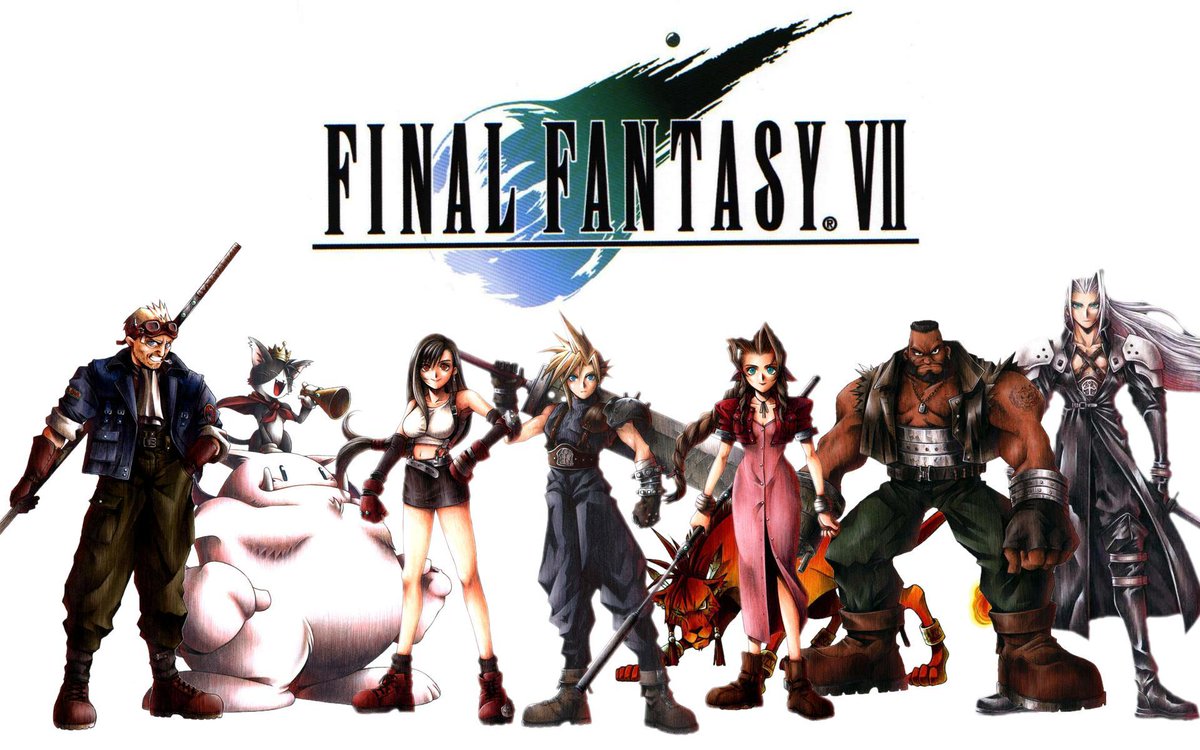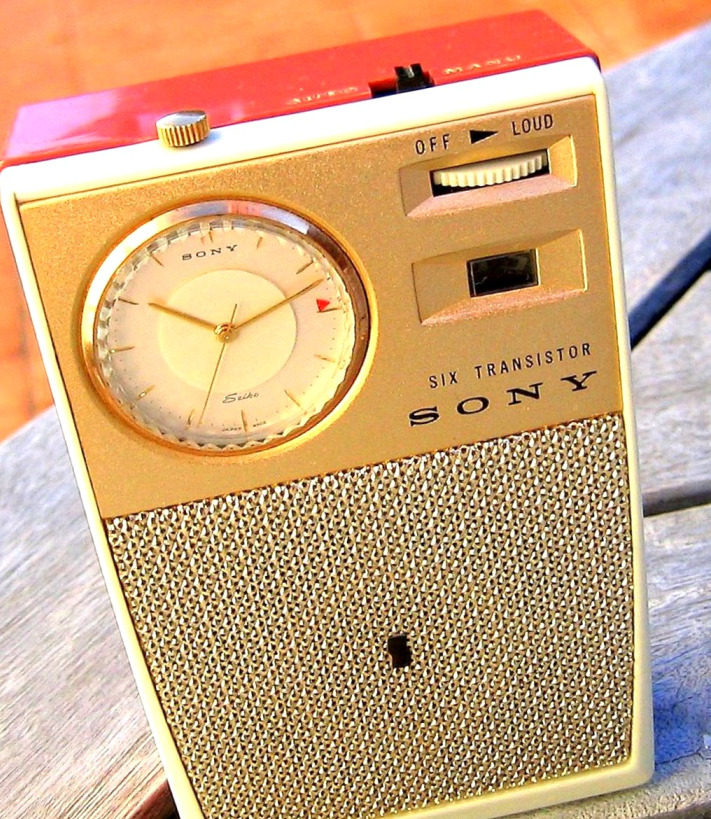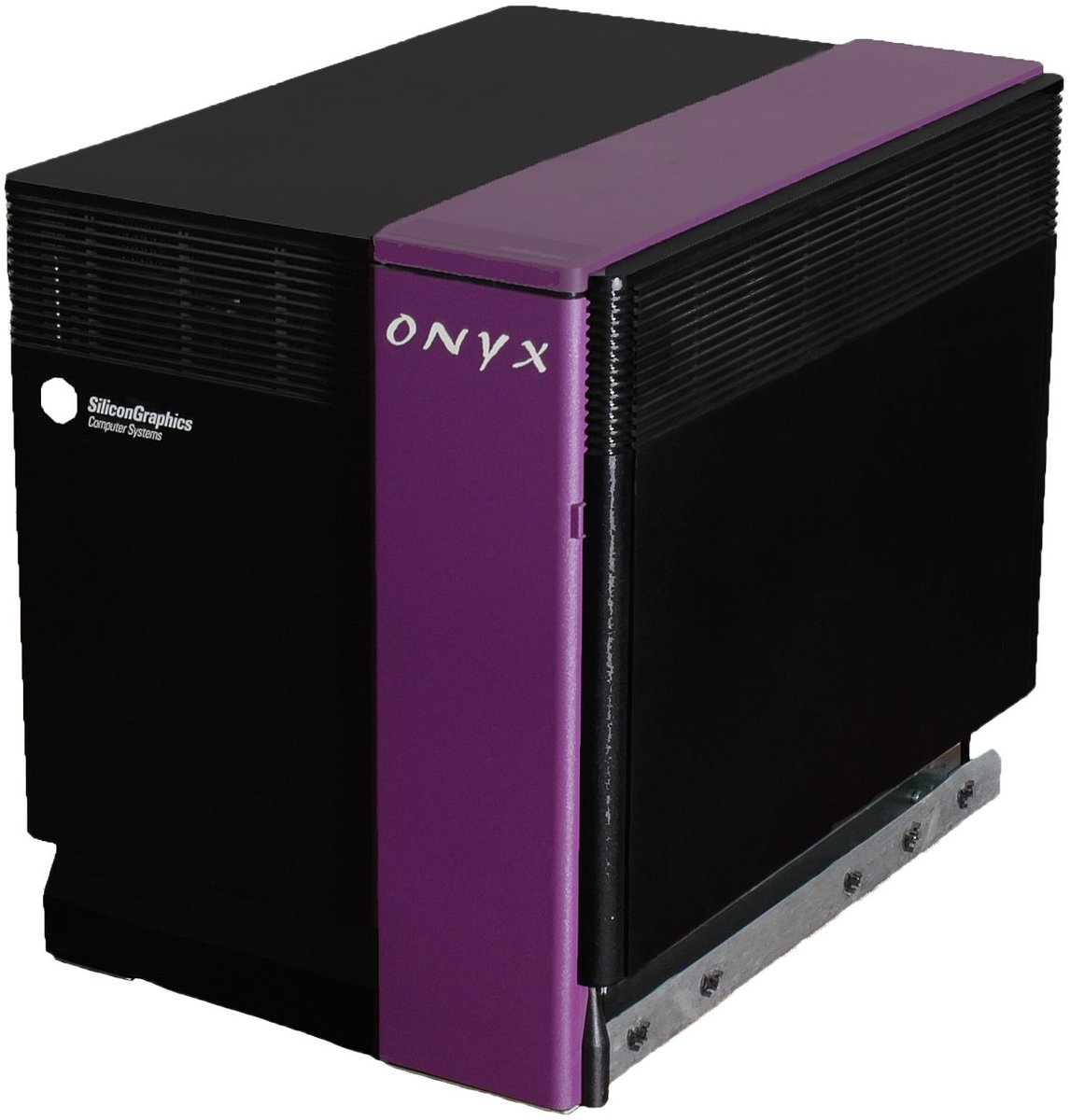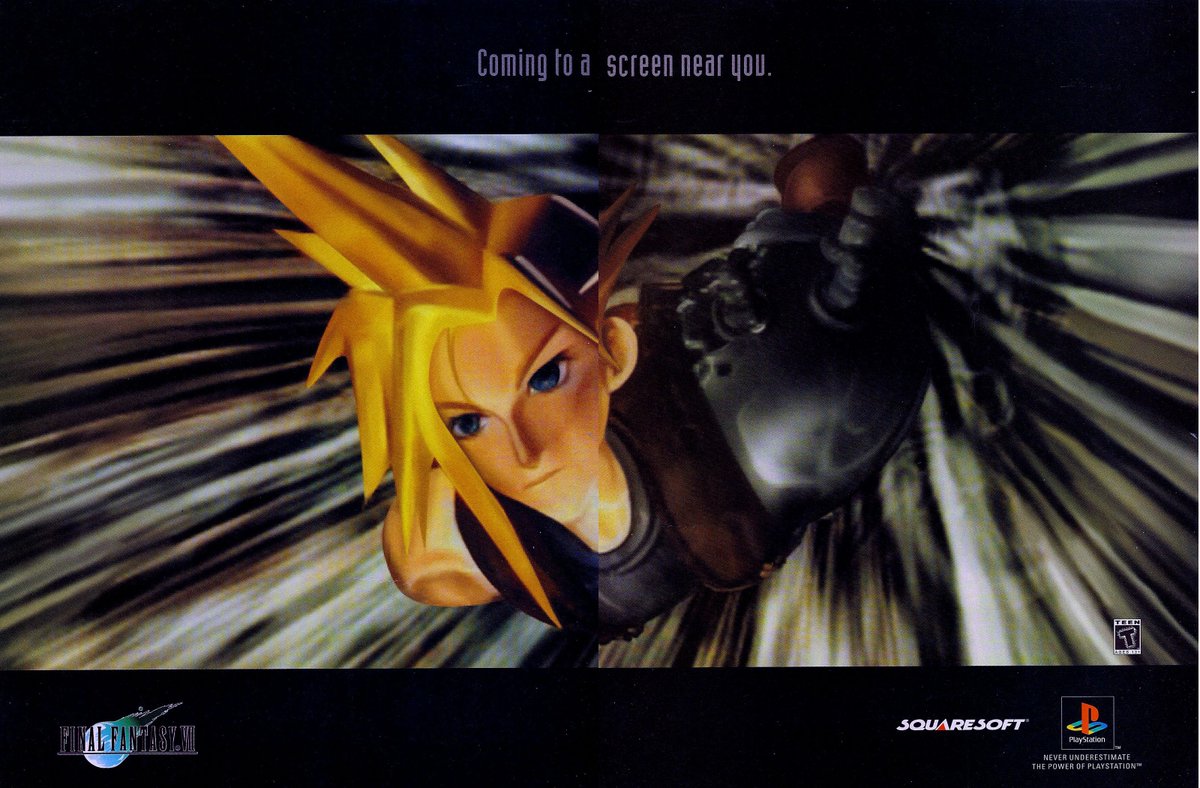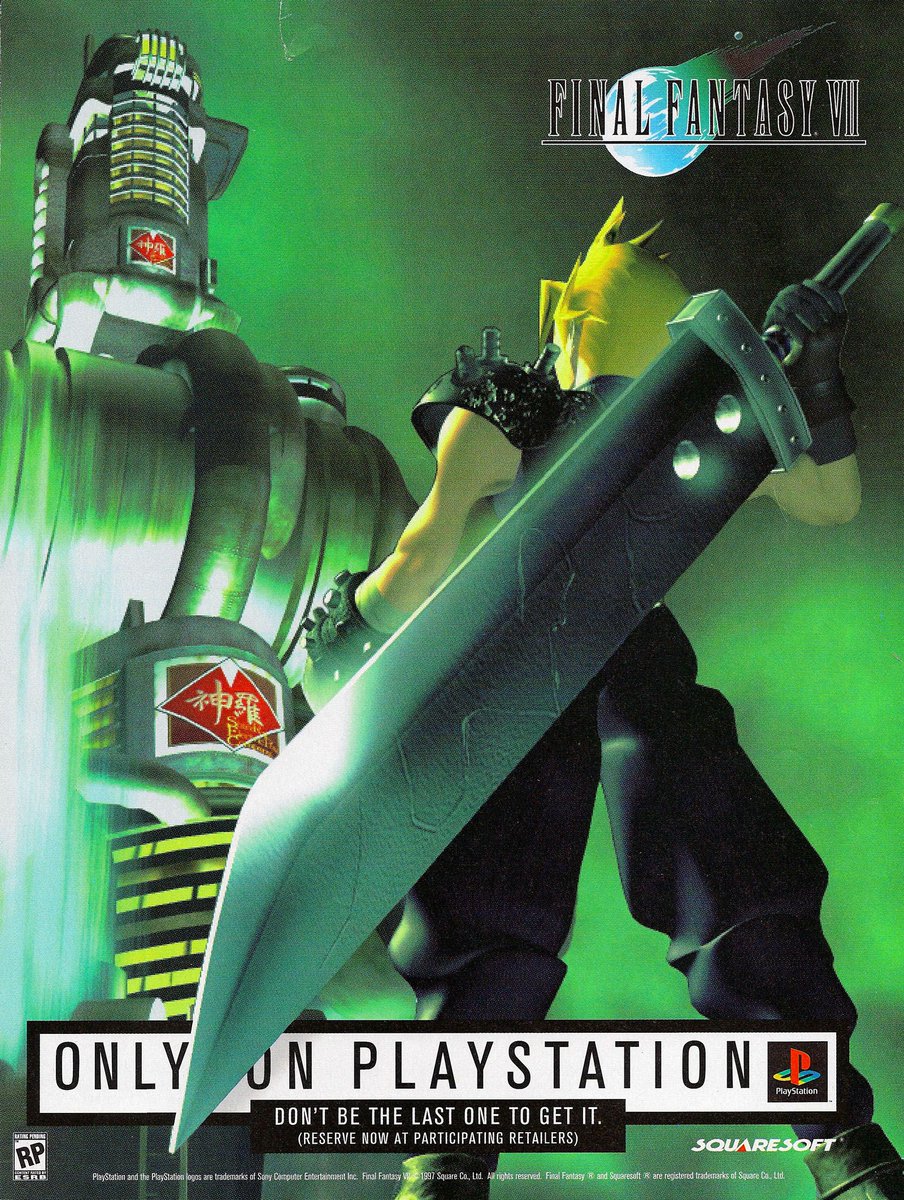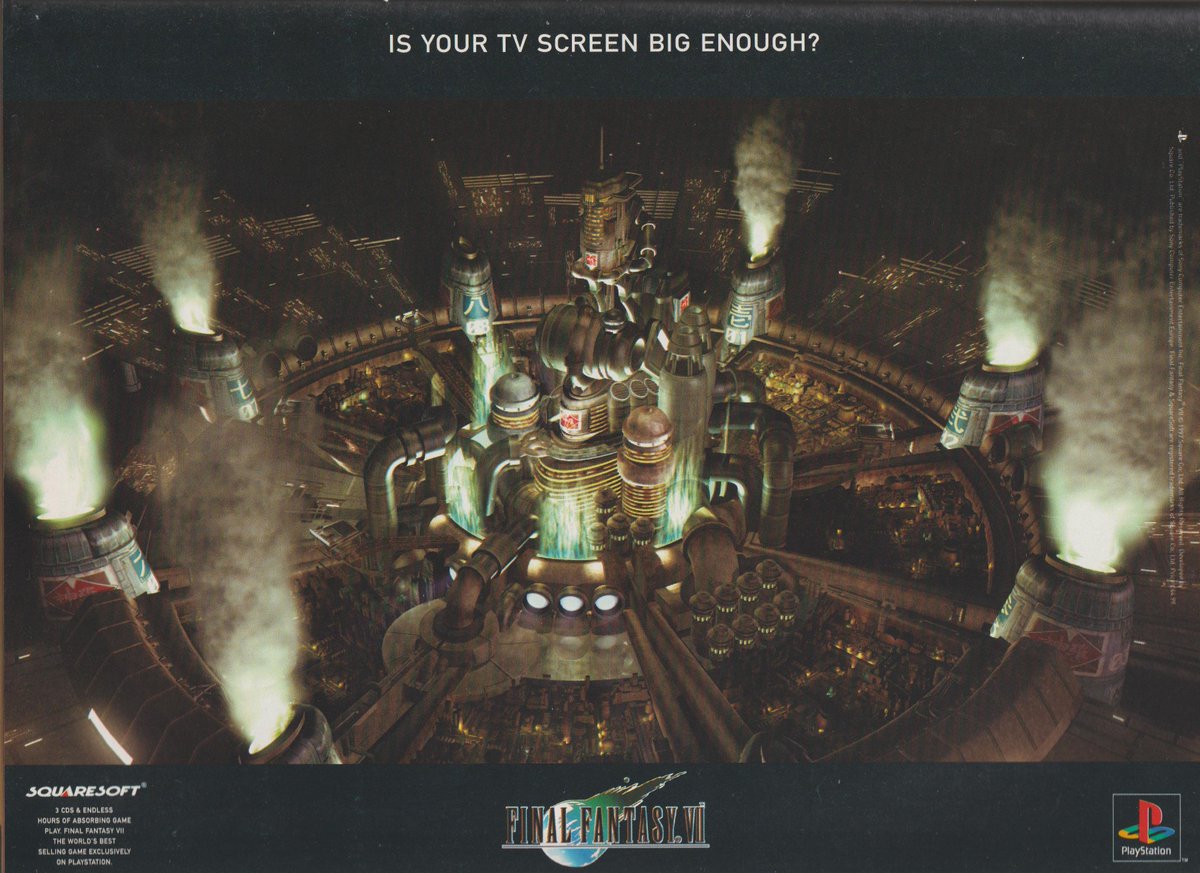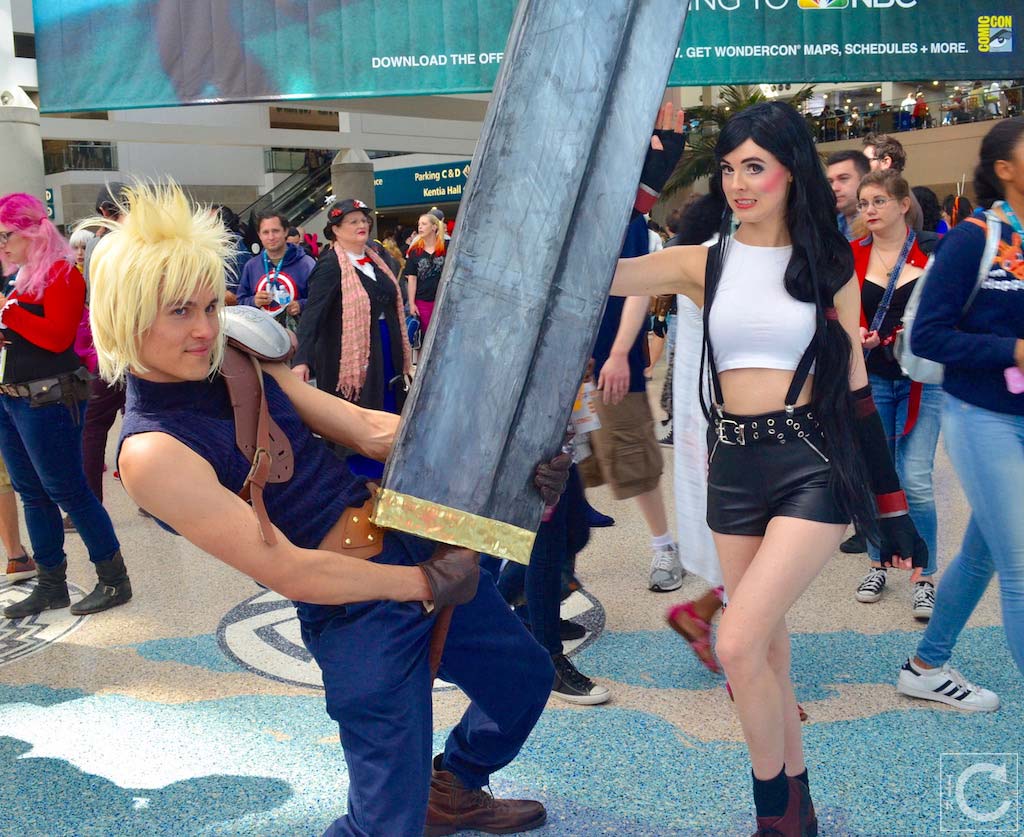Now that the #FinalFantasy VII remake #FF7R  https://abs.twimg.com/hashflags... draggable="false" alt=""> is here, it makes me think about what a literal game-changer the 1997 original was. Not just in terms of sales, but for the game industry, for Japan as a nation, and for global culture. (1/14)
https://abs.twimg.com/hashflags... draggable="false" alt=""> is here, it makes me think about what a literal game-changer the 1997 original was. Not just in terms of sales, but for the game industry, for Japan as a nation, and for global culture. (1/14)
Final Fantasy VII injected a megadose of Japanese sensibilities into the minds of young Westerners. Anime/manga style melodrama. Visual-kei & Amano goth. Androgynous heroes. Alternatives to Western style. But how did that happen? (2/14)
First off, jump back to 1953. That’s when Masaru Ibuka (below) and Akio Morita decided to rename their tongue-twister of an electronics company, Tokyo Tsushin Kogyo, into a more pronounceable “Sony.” Why Sony? (3/14)
“In choosing our name we did not purposely try to hide our national identity. But we certainly did not want to emphasize it,” wrote Morita later. Back then “the image of anything marked ‘Made in Japan’…was very low.” (4/14)
For good measure, they printed ‘Made in Japan’ as small as possible on their early products, like this transistor radio. Hard to imagine today, but Japan was, in 1953, a joke. But now let’s leap ahead four and a half decades to 1997. (5/14)
Japan’s hottest RPG, Final Fantasy VII, is about to debut. Squaresoft producer Sakuguchi had given director Kitase carte blanche to execute his vision, providing entire dev team with $70K SGI “Onyx” workstations, then in vogue for Hollywood flicks. (6/14)
Kitase’s team harnessed these finicky supercomputers to breathe 3D life into a virtual world, from gritty backdrops to the hero& #39;s gravity-defying hairstyle. The result was utterly unlike anything gamers had seen to date: an anime you could play instead of just watch. (7/14)
In FFVII, Sony saw a way for its PlayStation to one-up Nintendo and Sega globally. Sony spent $30 million USD on an all-out media blitz abroad. Rolling Stone, MTV, Sat Night Live. They took direct aim at the establishment — and not just gaming. (8/14)
“They said it couldn’t be done in a major motion picture,” teased one ad. “They were right.” Each spot ended with the PlayStation logo, punctuated by a young female voice intoning the word in Japanese: “Purei-suteshon.” (9/14) https://www.youtube.com/watch?v=OFGQ9_R7o48">https://www.youtube.com/watch...
Sony thought they might sell 750,000 copies if they were lucky. They sold a million by that December, making it Sony and Squaresoft& #39;s first megahit abroad. (The number would eventually pass three million.) (10/14)
This was a watershed moment not only for Sony and Squaresoft, but for video games as a genre. It established big-budget interactive entertainment from Japan as every bit an equal to primetime television programming and Hollywood productions. (11/14)
It was a huge moment for Japan, too. In 1953, Sony did everything in its power to downplay its Japaneseness. Now the company wasn’t just flaunting its roots. It was teaching young Westerners how to pronounce PlayStation in Japanese! On primetime TV! (12/14)
Thanks in big part to FFVII, Japan wasn’t the menace or laughingstock it had been to earlier generations. For the young people of America and the rest of the world, Japan equalled high-tech cool factor, excitement, authenticity — even a new identity. (13/14)
This story also happens to play a key role in my new book “Pure Invention: How Japan’s Pop Culture Conquered the World.” #PureInvention hits the shelves June 23. https://www.penguinrandomhouse.com/books/609076/pure-invention-by-matt-alt/">https://www.penguinrandomhouse.com/books/609... (14/14)

 Read on Twitter
Read on Twitter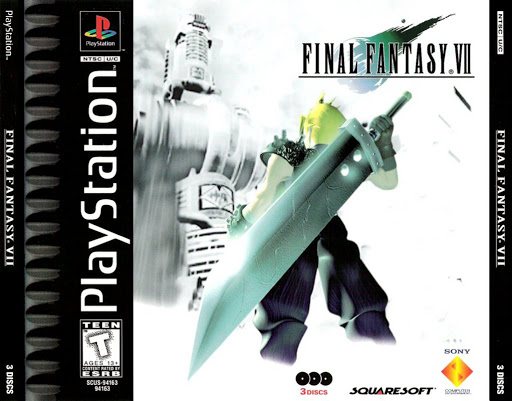 is here, it makes me think about what a literal game-changer the 1997 original was. Not just in terms of sales, but for the game industry, for Japan as a nation, and for global culture. (1/14)" title="Now that the #FinalFantasy VII remake #FF7R https://abs.twimg.com/hashflags... draggable="false" alt=""> is here, it makes me think about what a literal game-changer the 1997 original was. Not just in terms of sales, but for the game industry, for Japan as a nation, and for global culture. (1/14)" class="img-responsive" style="max-width:100%;"/>
is here, it makes me think about what a literal game-changer the 1997 original was. Not just in terms of sales, but for the game industry, for Japan as a nation, and for global culture. (1/14)" title="Now that the #FinalFantasy VII remake #FF7R https://abs.twimg.com/hashflags... draggable="false" alt=""> is here, it makes me think about what a literal game-changer the 1997 original was. Not just in terms of sales, but for the game industry, for Japan as a nation, and for global culture. (1/14)" class="img-responsive" style="max-width:100%;"/>
